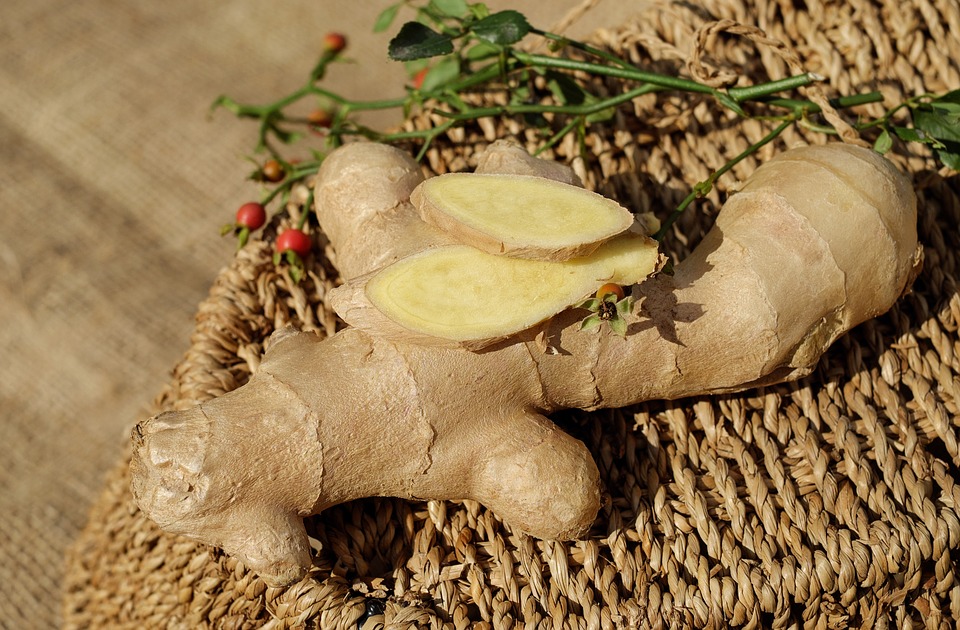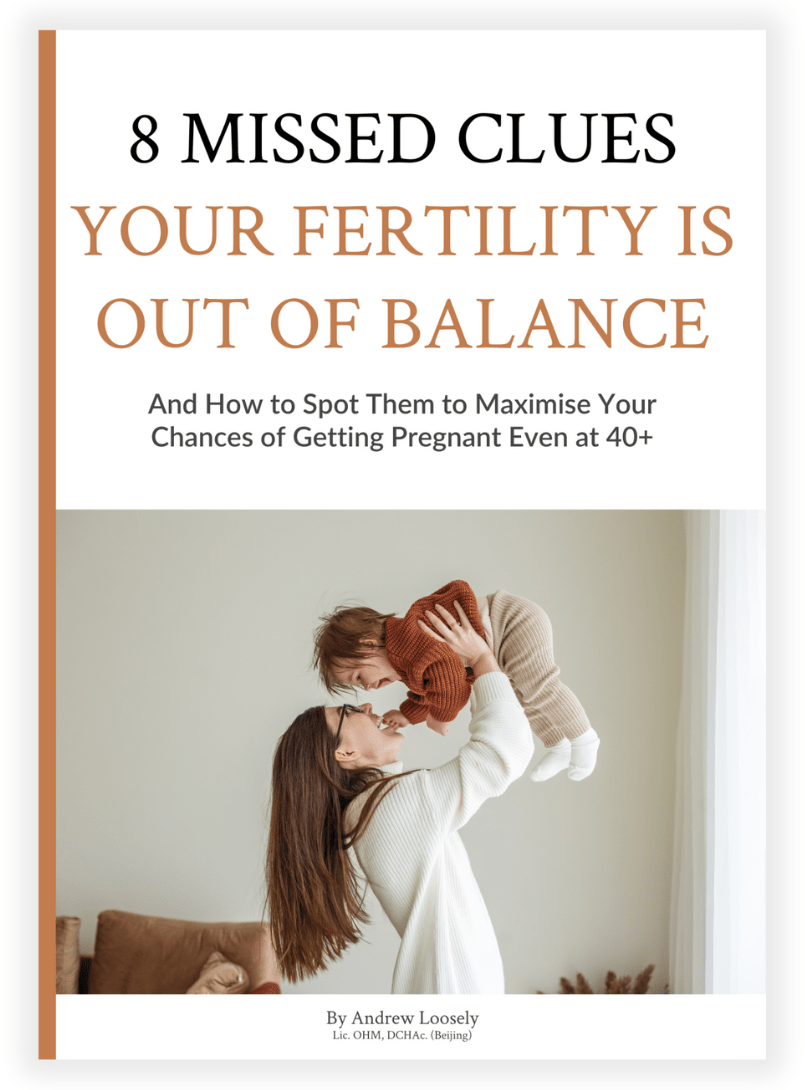Ginger: More Than Just For Nausea!

First mentioned in China in 494AD (1), ginger has a long historical use as a medicine in the Far East.
But it’s main use is not what’s often claimed in the west!
It actually has 5 key uses as follows:
- It reduces toxicity of other foods, and helps to make foods more digestible. It’s therefore used in daily cooking – in its raw form.
- It clears pathogens (viruses, bacteria, fungi etc) from the body making it useful for issues such as respiratory and digestive issues. This includes imbalance of the gut microbiome and pathogenic issues such as candida – in its raw form.
- It treats nausea and vomiting caused by coldness in the stomach – in its raw form.
- It clears ‘Cold’ from the body to restore warmth, internal activity, and circulation – in its dried form.
- Dries up excessive fluids particularly in the lungs and digestive system – in its dried form.
There are 2 important and different preparations of ginger to use:
- The fresh raw root form – this is the fresh root that you can find in most fresh vegetable sections of a supermarket.
- The dried form – which is either in a powder or tea bag form, usually found in the dried herbs and spices section of a shop. Tea bags with ginger usually contain the dried form.
Using the right preparation is vital and you cannot substitute dried ginger for fresh ginger – as the medicinal effects and actions are completely different. Please follow the list above to choose the right form for best results.
Ginger contains many different constituents but there are several key ones that have antimicrobial activity such as gingerol (2), paradol (3), and zingerone (4). These along with others, help in clearing a variety of pathogens from the body.
Fresh ginger is used by most people in China as part of their daily cooking, due to its ability to help break down denser foods such as meat and fish. As fish also has a cooling nature (and it’s ideal to avoid cooling too much when ttc) ginger is frequently used when cooking fish.
Supporting healthy digestion is key to your fertility health. Better break-down and absorption of food provides more nutrients for your body to use to nourish its cells, including egg and sperm cells. These two cell types are further supported by a selection of antioxidants that are also found in ginger.
CHINESE FERTILITY MEDICINE USE IT TO:
- Expel Pathogens cause by Coldness
- Treat Yang Deficiency
- Treat Qi Stagnation
- Clear Dampness
YANG DEFICIENCY:
Yang Deficiency is the Chinese Fertility Medicine term used to describe a lack of activity, warmth, or metabolism within your body.
It basically indicates an under-activity of the body – often related to the adrenal function, or the Hypothalamic-Pituitary-Adrenal axis. This axis regulates hormone production and release and is also involved in the regulation and production of energy and warmth.
Yang Deficiency often manifests as Thyroid issues, particularly Hypothyroidism and Hashimoto’s Thyroiditis as both of these are caused by an under-active metabolism.
Click here to read more about Yang Deficiency:
QI STAGNATION:
Qi (pronounced chee) is the Chinese Fertility Medicine word used to describe energy, life force, or vitality inside and outside the body.
Qi must always flow efficiently through the body to properly support the thousands of functions required of the organs and systems every day.
If the flow of Qi slows down, it is regarded as being a Qi Stagnation pattern.
This typically results in a variety of symptoms that can lead to stress, mood changes, hormonal imbalance, and other functional symptoms reflecting a lack of circulation in the body.
All of these have the ability to affect your fertility health as the regulation and ‘switching’ of hormones, fluids, energy, blood require a smooth and constant flow of energy to work properly.
Click here to read more about Qi Stagnation:
DAMPNESS:
Dampness is the word used in Chinese Fertility Medicine to describe an overabundance of negative types of fluids that have accumulated in the body.
This includes: mucus, phlegm, or water accumulation (edema) that build up over time in different areas of the body.
A variety of fertility issues can arise from having too much Dampness including: immune disorders, fluid retention, circulatory issues, bacterial and fungal overgrowth, and other inflammatory diseases.
Reducing dampness can take some time, but the physical effects you receive will be worth it!
Click here to read more about Dampness:
Key nutrients are:
Vitamin B2: Research shows that Riboflavin can act as an antioxidant, which helps to combat against harmful free radicals. Free radicals are known to negatively impact sperm and egg health, and so antioxidants are a vital part of the human diet.
Vitamin B3: Niacin as with most other B vitamins is involved in energy production within the mitochondria of your cells (the powerhouse of the cell). Pregnancy requires good levels of niacin, as does breast feeding.
Vitamin B6: Pyridoxine is involved in breaking many types of chemical bonds and is a component of many enzymes – which are involved in breaking down foods and substances, and also regulating steroid hormones.
Vitamin B9: Folate is an important nutrient for general and fertility health. It’s involved in the creation of DNA as well as the building of proteins, and many other important functions including the healthy development of your baby’s’ spinal cord. During pregnancy folate also supports the growth of the placenta and helps to prevent several types of birth defects, especially those of the brain and spine.
Vitamin C: For fertility health Vitamin C is important in the process of absorption and also in its ability to support the luteal phase of the menstrual cycle.
Sodium: helps with the regulation of blood pressure and volume, and fluid maintenance, to ensure you have enough fluid around your cells. This is important for the health of all cells including egg and sperm cells.
Potassium: Is an electrolyte which counteracts the effects of sodium, helping to maintain consistent blood pressure levels – another important element for pregnancy.
Phosphorus: Is an element that plays an important role in how the body uses carbohydrates and fats. It is also needed for the body to make protein for the growth, maintenance, and repair of cells and tissues. It is essential in our diet and particularly in children when growth and development occurs.
Magnesium: Supports a healthy immune system as well as keeps bones strong. It is also great for stress, and combined with vitamin B6 can help induce sleep and alleviate symptoms of bloating and weight gain associated with PMS.
Iron: Is a mineral that the body uses to carry oxygen in the blood and plays a key role in strengthening the immune system and helps regulate body temperature.
Zinc: Zinc is essential for the repair and function of DNA, which affects sperm and egg quality. It’s also essential for the rapid growth of cells and the building of major parts of cells during a pregnancy. The development and enzyme activity that takes place during pregnancy is supported by zinc, which means that this is one of the most important nutrients for babies and mothers.
Season Available: Available all year
How it’s typically cooked: stir-fried, boiled, steamed, and is also great as a tea
Cautions: Over-consumption of ginger without signs of coldness in the body can lead to the development of heat conditions and inflammation. Consumption during pregnancy should be restricted to between 5-10g per day and avoided if you have signs of heat (acne, dry mouth, thirst, constipation, red eyes, dark urine and more) – for clarity discuss this with a Chinese medicine practitioner.
References:
- Collection of commentaries on the Classic of the Materia Medica – Northern Qi Dynasty, 494AD. Author: Tao Hong-Jing/Tao Hong-Ming.
- Park M, Bae J, Lee DS. Antibacterial activity of [10]-gingerol and [12]-gingerol isolated from ginger rhizome against periodontal bacteria. Phytother Res. 2008;22:1446–1449. [PubMed]
- Galal AM. Antimicrobial Activity of 6-Paradol and Related Compounds. Pharm Biol. 1996;34:64–69.[Google Scholar]
- Manjunatha JR, Bettadaiah BK, Negi PS, Srinivas P. Synthesis of quinoline derivatives of tetrahydrocurcumin and zingerone and evaluation of their antioxidant and antibacterial attributes. Food Chem. 2013 Jan 15;136:650–8. [PubMed]
Disclaimer: https://naturalfertilityexpert.com/disclaimer/
Need more help?

Free Guide
8 MISSED CLUES YOUR FERTILITY IS OUT OF BALANCE – even if you’re over 40
Discover What’s Stopping You Having Your Baby
8 MISSED CLUES YOUR FERTILITY IS OUT OF BALANCE – even if you’re over 40
If you’re 40 or over and pregnancy isn’t happening for you naturally, or with IVF, then this guide will help you discover why being 40+ isn’t a barrier to having a baby – as long as you identify the root cause of your fertility issues and then bring your body back into balance.